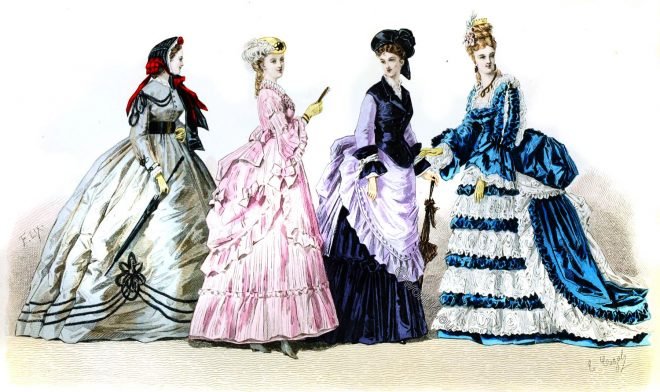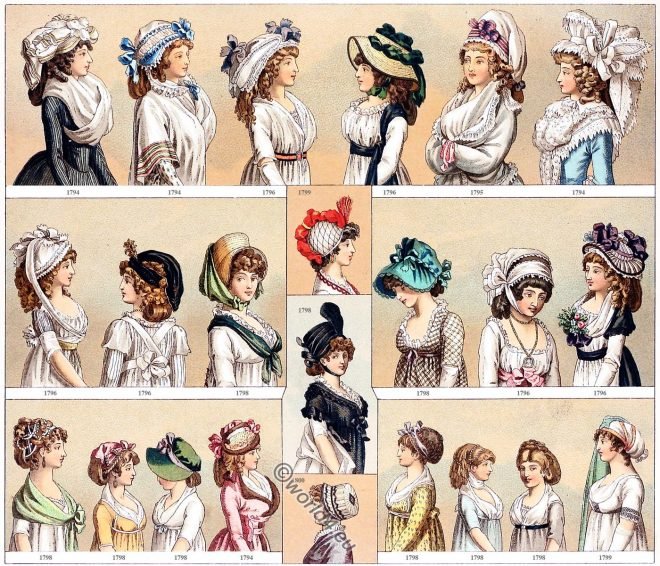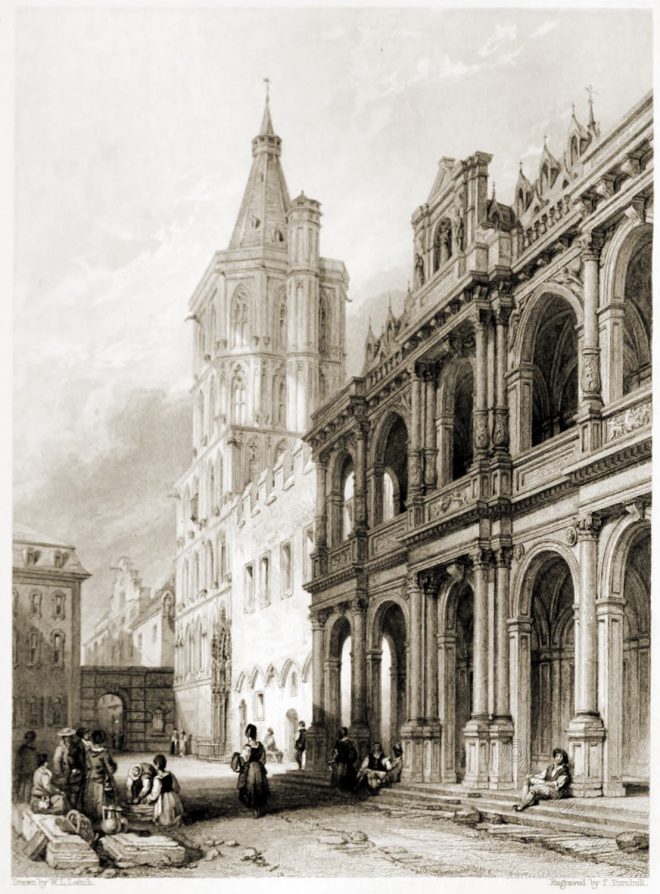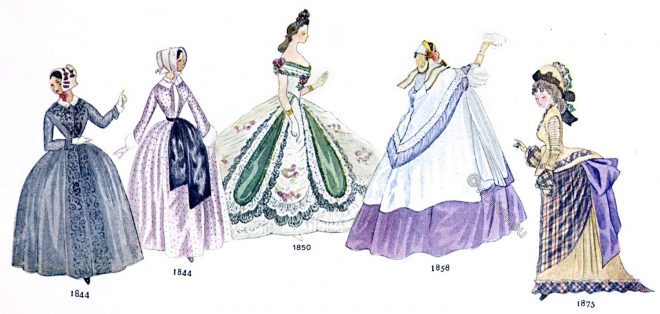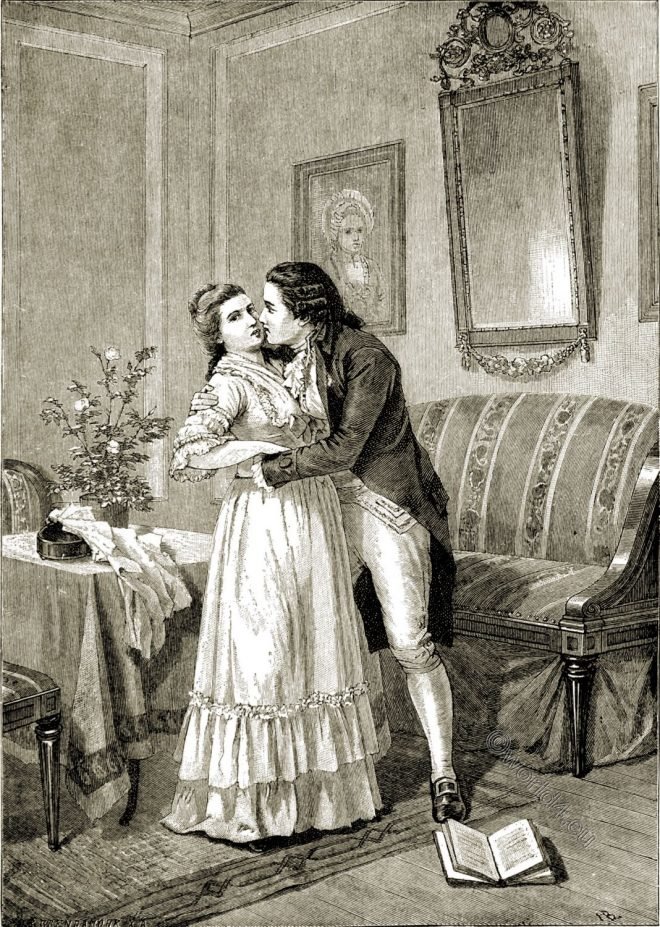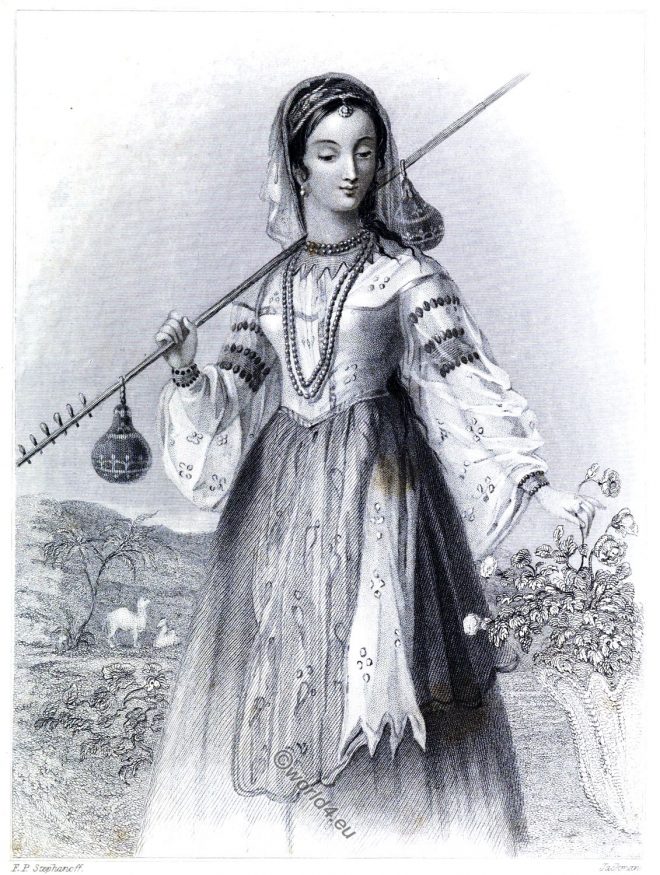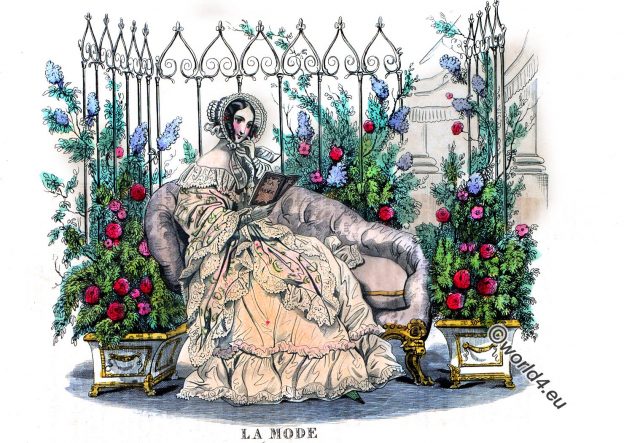The party dress here shows definite leanings toward the Romantic period, which began with 1815.
Tag: Romanticism fashion
Romanticism costumes and fashion. Romantic era from 1800 to 1850.
The Fashion of the Crinoline in the Reign of Napoleon III. Empire français.
The Reign of the Crinoline. Petticoats, Cashmere shawls, Pompadour parasols. Dressmakers, like tailors, had begun to deal in ready-made garments.
Female costumes and fashion from 1794 to 1800. France 18th century.
The comfortable costume, in which the belt was attached at a normal height, was soon followed by the close-fitting dress, the robe collante
The Town-Hall of Cologne on the Rhine, Germany 19th c..
Germany Romanticism. Cologne and the legend of the fight with the lion of the mayor Hermann Gryn.
The hoop skirt and its development within the history of costumes.
The hoop skirt in the age of the Spanish fashion (Renaissance) 16th century, in the age of rococo (Baroque), 18th century, crinoline fashion, 19th century.
Waverley, or, ‘Tis Sixty Years Since is the first novel by Sir Walter Scott.
Waverley appeared in 1814 and is considered the first British historical novel. The materials are Highland feudalism, military bravery, and description of natural scenery.
Werther and Charlotte. Goethe, The Sorrows of Young Werther (1774).
The suffering of the young Werther is regarded as the key novel of the Sturm and Drang (literally “storm and drive”). It developed into “the first bestseller of German literature”.
Elisabeth Amalie Eugenie, Duchess of Bavaria (also called Sisi).
Empress Elisabeth of Austria wearing a courtly gala dress designed by Charles Frederick Worth, 1865, with Diamond Stars by Franz Xaver Winterhalter, 1865.
Persian woman costume. England Victorian Romanticism.
English Black Romantic. Idealised, representation of women at the beginning of the Victorian age.
The Parisian Lady. La femme comme il faut. Honoré de Balzac
As the botanist detects among the hills and valleys some choice and unexpected prize, so you, amid Parisian vulgarities, have encountered a rare and exquisite blossom! It is the PARISIAN LADY!-the “FEMME COMME IL FAUT.”


